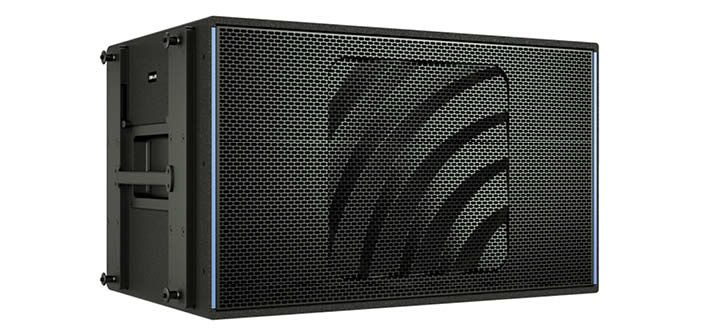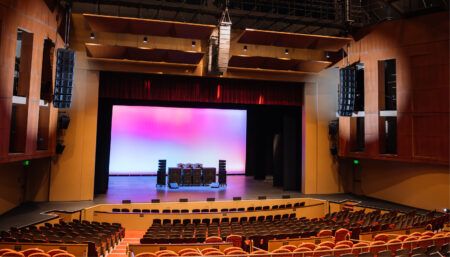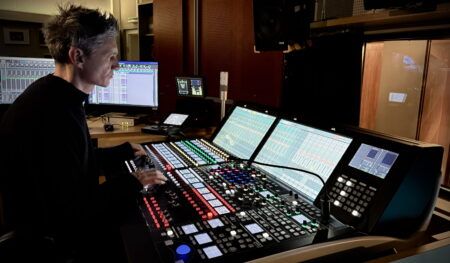Meyer Sound has introduced a new loudspeaker, the 2100-LFC low-frequency control element, designed to extend the technology of the Panther large-format linear line array loudspeaker down to the lowest limits of audibility.
The company said that by pairing a Class D amplifier with a single, new 21in driver with four voice coils, the 2100-LFC produces a linear acoustic output suitable for the most demanding applications. With an extended frequency response from 30-125Hz, this performance is achieved in a loudspeaker that is more than 1ft (30cm) narrower and about 20% lighter than the 1100-LFC product.
“The 2100-LFC shares the core design philosophy behind our breakthrough Panther line array,” said Andy Davies, senior product manager at Meyer Sound. “With the 2100-LFC we’ve had the same goal of making a lighter and slimmer self-powered cabinet with all the performance the industry has asked us for while bringing it to the market at a lower initial cost than the previous generation. With Panther and the 2100-LFC we now have a complete, full-bandwidth solution for high-impact sound reinforcement in large-scale portable and installed applications that meets the practical and budgetary demands of the modern industry.”
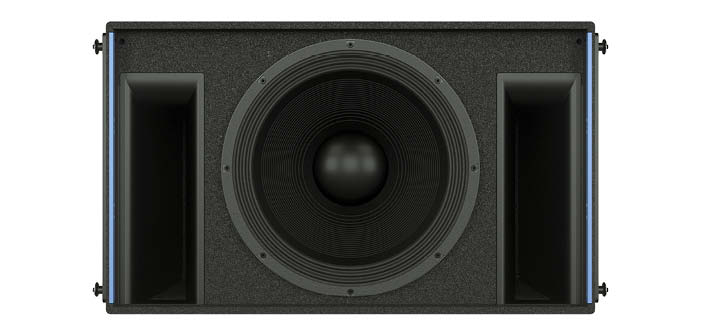
Achieving the performance goals of the 2100-LFC required the development of a new 21in cone driver and a new high-power Class D amplifier. For the driver, the Meyer Sound engineering team built on the experience gained from the dual voice coil 18in driver in the 900-LFC, but here stepping up to four voice coils. The new driver benefits from an all-new Class D amplifier rated at 1,200W maximum continuous power, with peak power of 8,000W.
“Like all sub-bass loudspeakers producing very high levels over hours of use, the magnets and voice coils can get very warm and that affects the linearity of the output,” said Davies. “But since we have AC power on board, we are able to engineer cooling systems not just for the amplifier but also for the magnet and voice coil assembly. So, the output of the 2100-LFC maintains a linear response no matter how hard you drive it.”
The frequency and phase response of the 2100-LFC is tailored to complement not only Panther but the entirety of Meyer Sound’s linear line array products.
The weight and size of the cabinet was reduced for flexibility, giving greater freedom to fly arrays using fewer or smaller motors. The company said that, coupled with the weight savings already achieved by Panther, this means productions are faster to rig and easier to fly in a wider range of venues.
Like the 1100-LFC, the 2100-LFC has symmetrical rigging hardware, for easy mixing of front and rear orientation in cardioid arrays. However, the narrower cabinet profile of the 2100-LFC allows for a more efficient truck pack, with three-high stacks fitting three across in USA or European semi-trailers. “The stacks are a bit higher than other models in the LFC family, but that’s usually wasted space up at the top,” said Davies. “Overall, it’s a far more efficient use of truck space, and when you add the savings in space Panther has already contributed, we are dramatically reducing the cost of touring logistics.”
Preliminary specifications for the 2100-LFC low-frequency control element give measurements of 42in (107cm) wide, 24in (61cm) high and 26.5in (67cm) deep. The enclosure is multi-ply birch with a textured finish. The grill is powder-coated stamped steel.
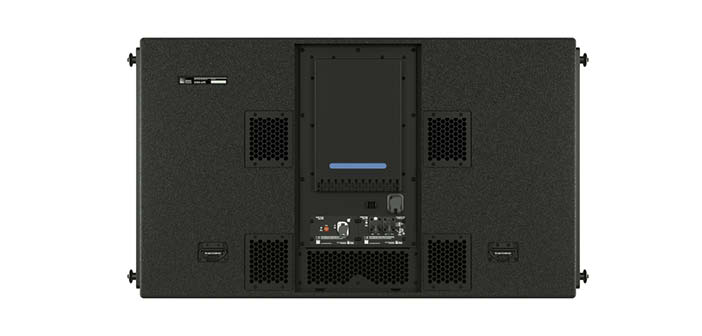
The 2100-LFC also incorporates the same standard dual input module as Panther, offering both a Milan AVB endpoint for digital audio and monitoring telemetry, plus an analogue input for backward compatibility with existing systems. System monitoring and connectivity is handled by Meyer Sound’s Nebra software package. The 2100-LFC will also benefit from the product integration functionality in the Galileo Galaxy series of processors, for audio integration with all generations of its self-powered systems. All connections on the module – network, AC power and analogue XLR input – are via Neutrik True Outdoor Protection (TOP) connectors with an IP55 rating, making weather protection a standard feature.
“A sub-bass unit with a single 21in driver is something we’ve wanted to offer for a number of years because of the size and weight advantages as well as the sonic benefits,” said Davies. “Finally, technology and engineering have caught up with our ambitions. We set a high bar with the 1100-LFC, which set a new standard for power paired with accuracy and musicality. We expect the 2100-LFC will deliver a level of open, transparent and linear low-frequency power that will again raise the bar for the industry and redefine what is possible.”
The Meyer Sound team responsible for the design, specification and testing of the 2100-LFC was led by Katharine Murphy Khulusi, engineering director, acoustical and mechanical. “We are excited to continue to push the boundaries of performance. The 2100-LFC will be in the same performance class as the 1100-LFC in a lighter, more compact package. The extended frequency response gives 35% extra usable range. This launch continues to take our new products into the future.”
Orders for the 2100-LFC low-frequency control element are being accepted immediately, with the first shipments anticipated in Q2 of this year.


